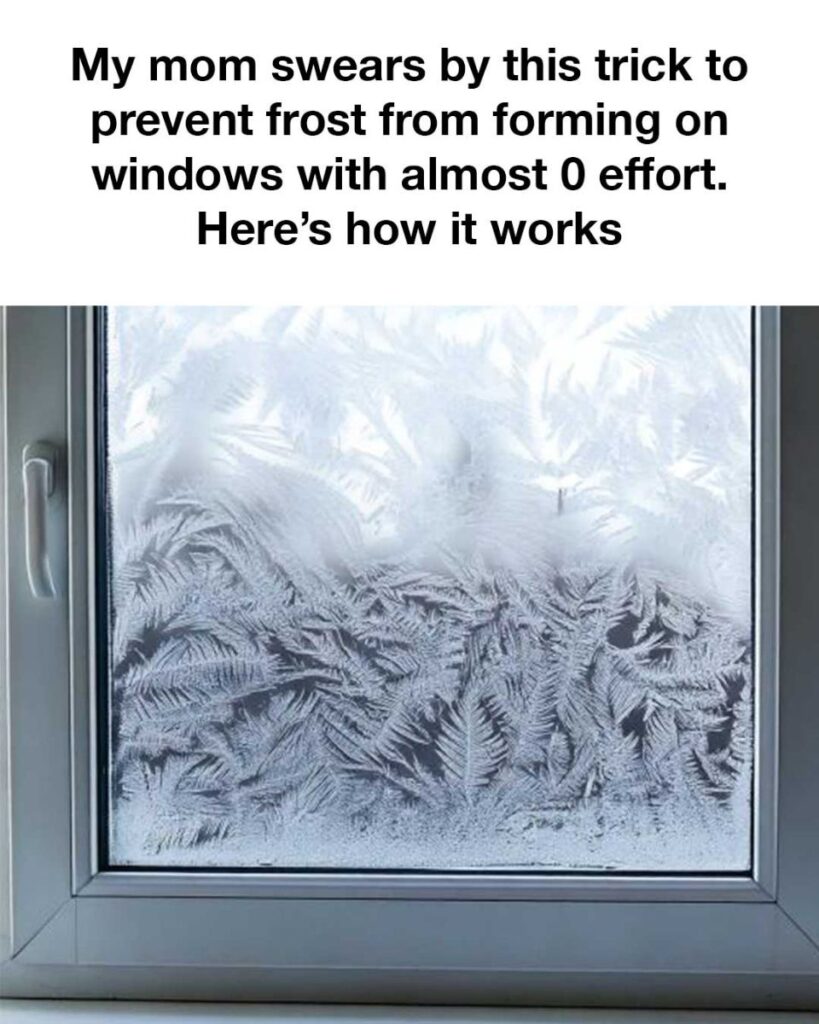Winter can transform our surroundings into a picturesque wonderland, but it also brings with it the nuisance of frost-covered windows. This not only obstructs our view but can also lead to increased energy bills as we try to keep our homes warm. Fortunately, there are simple, effective solutions to prevent frost from forming on windows, and my mom has a tried-and-true method that requires almost no effort. In this article, we’ll explore her ingenious trick and how you can easily implement it in your own home.
Understanding the Causes of Window Frost
Frost forms on windows when the temperature outside is much colder than the temperature inside, causing moisture in the warm indoor air to condense and freeze on the cold glass. This is particularly common in older homes with single-pane windows or poor insulation. Understanding the science behind frost formation can help us find effective ways to prevent it.
The Simple Trick My Mom Uses
My mom’s trick involves using a common household item: shaving cream. By applying a thin layer of shaving cream to the inside of the window and then wiping it off, a protective film is left behind that prevents moisture from condensing and freezing on the glass. It’s a quick and easy solution that doesn’t require any special tools or materials.
Materials Needed for the Frost Prevention Trick
To use this method, you’ll need just a few simple items: a can of shaving cream (the foamy kind, not gel), a clean cloth or paper towel for application, and another cloth for wiping off the excess. That’s it!
Step-by-Step Guide to Applying the Trick
1. Start with clean windows. Wipe down the glass to remove any dirt or dust.
2. Shake the can of shaving cream and apply a small amount to a clean cloth.
3. Spread the shaving cream evenly over the entire surface of the window.
4. Let it sit for a few minutes.
5. Use a second clean cloth to wipe off the shaving cream, leaving a thin, invisible layer on the glass.
6. Enjoy frost-free windows!
Why This Trick Is Effective
Next Page
Why This Trick Is Effective
The shaving cream trick works because it creates a thin, invisible barrier on the glass that reduces the surface tension of water droplets, preventing them from sticking and freezing. This simple layer acts as a shield against condensation, which is the precursor to frost.
Additional Benefits of Using This Method
Besides preventing frost, this method also helps to keep windows cleaner for longer, as the film left behind can repel dust and smudges. It’s also a cost-effective solution, as shaving cream is inexpensive and readily available.
Comparing Other Frost Prevention Methods
There are several other methods for preventing window frost, such as using window insulation film, applying anti-fog sprays, or even installing double-glazed windows. However, these methods can be more costly or require more effort to implement compared to the shaving cream trick.
Common Mistakes to Avoid
One common mistake is using too much shaving cream, which can leave a residue that’s difficult to remove. It’s important to apply a thin, even layer and wipe off the excess thoroughly. Another mistake is not cleaning the windows beforehand, which can lead to streaks or uneven application.
Frequently Asked Questions
Q: Does this method work on all types of windows? A: Yes, it works on most glass surfaces, but results may vary depending on the window’s insulation quality. Q: How often should I reapply the shaving cream? A: For best results, reapply every few weeks or as needed, especially after cleaning the windows. Q: Can I use gel shaving cream? A: No, gel shaving cream does not work as effectively as the foamy kind.
Conclusion and Final Thoughts
Preventing frost on windows doesn’t have to be a daunting task. With my mom’s simple shaving cream trick, you can keep your windows clear and your home cozy with minimal effort. It’s an easy, affordable solution that anyone can try. So next time the temperature drops, give this method a shot and enjoy the benefits of frost-free windows.

